#Tarn Willers
Text
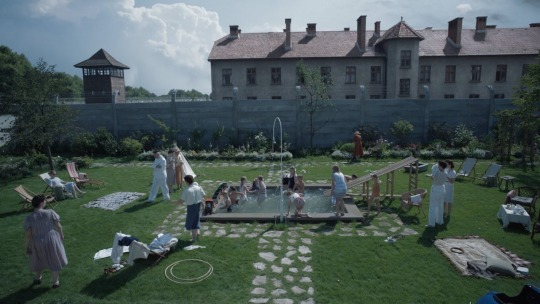
The Zone of Interest (2023, United Kingdom/Poland)
Over the last decade, English director Jonathan Glazer questioned whether it was appropriate for him to make a Holocaust movie from a Nazi perspective. Glazer, who comes from a Jewish family in north London, said that his family never spoke about the Holocaust at home, but it nevertheless loomed over their lives. His late father, when learning about Glazer’s decision to adapt Martin Amis’ novel The Zone of Interest, expressed disapproval. Yet Glazer forged ahead, his vision now complete.
I am no expert in the area of Holocaust cinema (of which there is a growing and always-controversial history) and do not profess to be a specialist of the Holocaust or Nazism. Nevertheless, I do believe it is possible to make a moral Holocaust narrative film from a Nazi point of view. Does Glazer succeed in doing so? That is a question that still perplexes me, and I am not sure if I can provide any satisfying answer. Given Glazer’s moral agonizing while making and within the visuals of this film, I am not sure if he knows either. So while I will still attempt to engage with the morality of The Zone of Interest (which, by many accounts, resembles little of Amis’ novel), this write-up’s premise will concentrate on two of the film’s goals as stated by Glazer himself.
The first is to immerse the viewer into the psychologies of Auschwitz concentration camp commandant Rudolf Höss (Christian Friedel; Rudolf Höss was the longest-serving commandant of the camp) and his wife, Hedwig (Sandra Hüller), and understand how their mindset is similar to how the viewer compartmentalizes modern-day atrocities. In these respects, Glazer succeeds. Just. Secondly, Glazer, “wanted to remove the artifice of filmmaking” in order to make as natural a film as he could, so that the audience can pay stricter attention to what is occurring on-screen. This is where The Zone of Interest falters.
It is 1943 in Nazi-occupied Poland. The Höss family lives in an estate just outside the walls of Auschwitz. Some days, the five children and their parents spend a lazy outing at a nearby riverbend, swimming and enjoying nature. At home, the Höss parents shield their children from the ugliness of the Second World War and the mass human suffering occurring just beyond the walls of the camp next door. Hedwig’s perfectly manicured garden, replete with flowers for decoration and herbs for cooking, is her escape – a world without wants. A small pool in the spacious backyard provides the children plenty of swim time. On a clear day, we can see the smoke stacks of an approaching train in the distance, soon to drop off its passengers to a place worse than hell itself. At night, Auschwitz’s crematorium spews an unearthly red – piercing the sky and sneaking past the drawn curtains of the Höss estate. And at all hours, we hear gunfire and screaming emanating from inside the camp.
Never do cinematographer Łukasz Żal’s (2014’s Ida, 2018’s Cold War) cameras show any glimpses of life within Auschwitz’s walls. None of the human suffering wrought by the Nazis appears directly in the film. We have a fleeting glimpse, obscured by foliage and for purposes unclear, of chained prisoners walking outside the camp’s walls under military escort. In another moment in the Höss household, a female prisoner comes to Rudolf Höss’ office for what is presumed to be forced sex; we never see or hear from her again, as we witness him wash his genitals (filmed from his backside) after their encounter. The particulars of what the Nazis did to the inmates of Auschwitz and the other concentration camps is for another film, Glazer says, a self-admission that he cannot hope to capture that suffering in narrative or documentary form. The decision not to show any Holocaust cinema has precedent, as seen in Claude Lanzmann’s documentary Shoah (1985, France) – largely seen as the 566-minute magnum opus of Holocaust cinema.
Instead, Glazer is more interested in something that has become a cliché in all writings on The Zone of Interest – what philosopher Hannah Arendt deemed the “banality of evil” – in order to allow modern audiences understand their own complicity in contemporary atrocities. Writing on the 1960 trial of Adolf Eichmann (one of the crucial facilitators of the Holocaust) in Israel, Arendt’s definition of the “banality of evil” stemmed from her subject’s lack of ideological fanaticism towards Jews, coupled with his inclination towards professional progression if it meant not having to think critically about any moral issues tied to said progression.
Arendt’s definition of the “banality of evil” has been controversial ever since the publication of 1963’s Eichmann in Jerusalem – a common accusation that Arendt was trying to diminish the severity of Eichmann’s guilt (she was not). Controversies aside, The Zone of Interest, on a cinematic surface, adopts that same “banality of evil”. The Höss parents never engage in explicit anti-Semitic language or refer to Auschwitz’s inmates as subhuman. Though Rudolf washes his genitals after the presumed sexual encounter with the prisoner and Hedwig seems uneasy when going through the luxury clothes of incarcerated/deceased camp inmates, life otherwise appears normal. In a scene where Rudolf is meeting with a private contractor on a more efficient crematorium system, both Rudolf and the contractor speak not with genocidal terms, nor carefully-worded innuendos. Instead, their meeting covers only the mechanics of the proposed system, in numbers and cold engineering efficiency. Without the historical context of The Zone of Interest, that discussion might eerily fit in a plain industrial meeting (not so much a later meeting with other concentration camp commandants as they discuss an imminent influx of Hungarian Jews to their camps).
To what lengths can a person accept the rationalizations of a leadership bent on the mass slaughter of innocent people on an industrial scale? Similarly, how does one reckon with their ostensibly peaceful existence when that peace is made possible only by revolting violence just a stone’s throw away? For these questions, we never receive any answers from anybody in the Höss family or their associates depicted within this film or from history itself. They live life without examining themselves, with no hints of regrets.
With the Höss parents not providing potential answers, it then turns to the viewer to ask themselves those same questions. I do not wish to come off as a youth-basher, but younger (American) viewers will need additional context for this film, if generational rates of Holocaust denialism are to be believed. For the rest of us, can we imagine ourselves turning a blind eye or going about our daily lives knowing that our happiness rests on the oppression, subjugation, or mass murder of a people? What do you share, personally, with Rudolf and Hedwig Höss? Does The Zone of Interest, in reaction to popular Hollywood Holocaust dramas of the 1990s and 2000s (see: 1993’s Schindler’s List, 2002’s The Pianist), paint the Holocaust as a non-unique event? This is a provocative work from a filmmaker who, in the absence of a grander narrative or intentional moralizing in his work, turns all of the introspection onto the audience. Beyond that, the film in and of itself is ideologically hollow.
The other half of Jonathan Glazer’s aims for The Zone of Interest was to create a film with minimal cinematic artifice. Łukasz Żal’s unobtrusive compositions and mostly-still camera certainly help in this regard, but too often some of the interior shots of the Höss household appear as if they are coming from the corners of the room, like anachronistic security camera footage. Most anachronistic of all are the black-and-white scenes in night vision for exterior shots of a young girl leaving apples around workplaces at Auschwitz. How jarring that the most humanistic moments of The Zone of Interest appear in the most visually artificial scenes of the film. The use of a night vision camera broke whatever hold The Zone of Interest had on me, cinematically. It comes off as a needless artistic flourish, as if to impress a captive audience.
Worst of all is Mica Levi’s horrific and unlistenable score. The score, for the ten to fifteen minutes it plays (hardly a score given a 106-minute runtime), is an atonal howler that shares a close relationship with the sound mix* – to the point where numerous other film critics have conflated the two. If Glazer is attempting to dissociate his film from the artifices of cinema, I cannot think of a better encapsulation of how quickly he fails than with this collaboration with Levi. In a time when many directors are telling their composers that they do not want noticeable music (in most instances, a fundamental misunderstanding about the dramatic and emotional capabilities of film music), Levi’s score is inescapable. Its heavy sonic distortions; complete dismissal of any familiar intonation (one of Levi’s primary influences is experimental composer Harry Partch, whose music obliterates the familiar seven pitches of a diatonic scale in favor of a 43-tone scale with uneven intervals); and bizarre use of electronically-manipulated choral screaming (a kitschy musical decision that borders on the insensitive and tasteless) might perfectly set the tone for some viewers. For myself – especially the scenes shot in night vision and the moment the screen fades to red – it was a discordant distraction that, again, only served to take me out of the movie.
The best film scores have several disparate but heavily interdependent and coequal qualities: they empower, but not overtake, the comedic/dramatic and emotional power of a movie and its narrative (if a narrative is present); they should typify exemplary musicianship (in composition and performance); and the viewer should be able to hear the music. Levi and Glazer share the failure on the the first two aspects. It is only on this third aspect that Mica Levi’s work truly contributes to The Zone of Interest – a film that would be better treated without a score.
The Zone of Interest raises pertinent questions of culpability and human responsibility in reckoning with humanity at its worst. There are moments in here – mostly scenes in which the reality of the Holocaust leaves its terrible shadow over the Höss family, moments where you expect them to possibly recoil from what they are doing – that stick with me, and haunt my ruminations over how I rationalize living in a society built on violence. Crucially, The Zone of Interest is not unique in inspiring such thoughts in a person, as some are suggesting. Martin Scorsese’s Killers of the Flower Moon (2023) and Steve McQueen’s 12 Years a Slave (2013) also provoked a similar introspection in me – these films depict two episodes within the context of the two original sins of my home nation. And though neither of those films centralize the goodness of others (far from it), if one looks close enough, one can find the banality of good (amid more naturalistic filmmaking).
In the end, Jonathan Glazer’s treatment of The Zone of Interest buckles underneath the weight of his promise to forego the conventions of art cinema. His objectives conflict with the artistic trappings – in its cinematography, music, sound mix, and an intellectual remove from human nature that I am unsure is appropriate for this subject matter – found within. It leaves his promise utterly broken.
My rating: 5/10
^ Based on my personal imdb rating. My interpretation of that ratings system can be found in the “Ratings system” page on my blog. Half-points are always rounded down.
* You hear nearly everything in this film. Sometimes, a little too perfectly. There are several moments in The Zone of Interest in which you hear the screams of Auschwitz’s prisoners or gunshots and they sound as if they are far too close to the Höss household than they should be. It reminded me, to paraphrase Larry Mantle on the December 15, 2023 episode of FilmWeek, of stage plays using off-stage tapes to play sounds for activities ostensibly not occurring "on stage". While that might work in a stage play, that is not the sort of comparison I wish to be making when writing on a film.
For more of my reviews tagged “My Movie Odyssey”, check out the tag of the same name on my blog.
#The Zone of Interest#Jonathan Glazer#Christian Friedel#Sandra Hüller#Ralph Herforth#Daniel Holzberg#Sascha Maaz#Martin Amis#Łukasz Żal#Paul Watts#Mica Levi#Tarn Willers#Johnnie Burn#A24#31 Days of Oscar#My Movie Odyssey
2 notes
·
View notes
Text
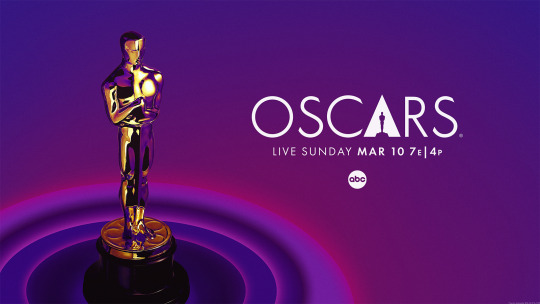
Oscars 2024 winners:
Best Picture – Oppenheimer
Best Actress in a Leading Role – Emma Stone, Poor Things
Best Directing – Christopher Nolan, Oppenheimer
Best Actor in a Leading Role – Cillian Murphy, Oppenheimer
Best Original Song – “What Was I Made For?” by Billie Eilish and Finneas O'Connell, Barbie
Best Original Score – Ludwig Göransson, Oppenheimer
Best Sound – Tarn Willers and Johnnie Burn, The Zone of Interest
Best Live Action Short Film – The Wonderful Story of Henry Sugar
Best Cinematography – Hoyte van Hoytema, Oppenheimer
Best Documentary Feature Film – 20 Days in Mariupol
Best Documentary Short Film – The Last Repair Shop
Best Film Editing – Jennifer Lame, Oppenheimer
Best Visual Effects – Takashi Yamazaki, Kiyoko Shibuya, Masaki Takahashi and Tatsuji Nojima, Godzilla Minus One
Best Actor in a Supporting Role – Robert Downey Jr., Oppenheimer
Best International Feature Film – The Zone of Interest (United Kingdom)
Best Costume Design – Holly Waddington, Poor Things
Best Production Design – Production Design: James Price and Shona Heath; Set Decoration: Zsuzsa Mihalek, Poor Things
Best Makeup and Hairstyling – Nadia Stacey, Mark Coulier and Josh Weston, Poor Things
Best Adapted Screenplay – Cord Jefferson, American Fiction
Best Original Screenplay – Justine Triet and Arthur Harari, Anatomy of a Fall
Best Animated Feature – The Boy and the Heron
Best Animated Short Film – War Is Over! Inspired by the Music of John & Yoko
Best Actress in a Supporting Role – Da'Vine Joy Randolph, The Holdovers
#Oscars 2024#Oscars#Oppenheimer#Poor Things#The Zone of Interest#American Fiction#Anatomy of a Fall#Barbie#The Boy and the Heron#Godzilla Minus One#The Holdovers#The Last Repair Shop#20 Days in Mariupol#War Is Over! Inspired by the Music of John and Yoko#The Wonderful Story of Henry Sugar#film#awards
42 notes
·
View notes
Text
My 96th Academy Awards Predictions
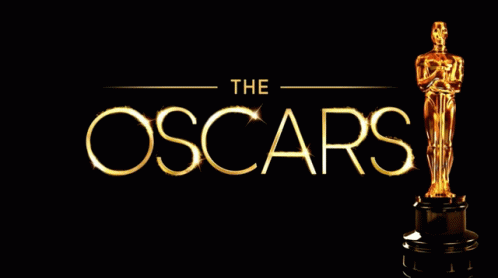
BEST PICTURE - Oppenheimer
BEST DIRECTOR - Christopher Nolan, Oppenheimer
BEST ACTRESS - Lily Gladstone, Killers of the Flower Moon
BEST ACTOR - Cillian Murphy, Oppenheimer
BEST SUPPORTING ACTRESS - Da’Vine Joy Randolph, The Holdovers
BEST SUPPORTING ACTOR - Robert Downey Jr., Oppenheimer
BEST ORIGINAL SCREENPLAY - Celine Song, Past Lives
BEST ADAPTED SCREENPLAY - Cord Jefferson, American Fiction
BEST INTERNATIONAL FEATURE - The Zone of Interest, United Kingdom
BEST ANIMATED FEATURE - Spider-Man: Across the Spider-Verse
BEST DOCUMENTARY FEATURE - 20 Days in Mariupol
BEST CINEMATOGRAPHY - Hoyte van Hoytema, Oppenheimer
BEST EDITING - Jennifer Lame, Oppenheimer
BEST COSTUME DESIGN - Holly Waddington, Poor Things
BEST HAIR AND MAKEUP - Kazu Hiro, Kay Georgiou, and Lori McCoy-Bell, Maestro
BEST SOUND - Tarn Willers and Johnnie Burn, The Zone of Interest
BEST VISUAL EFFECTS - Godzilla Minus One
BEST PRODUCTION DESIGN - Poor Things
BEST ORIGINAL SONG - “What Was I Made For?”, Billie Eilish and Finneas, Barbie
BEST ORIGINAL SCORE - Ludwig Göransson, Oppenheimer
BEST LIVE-ACTION SHORT - Wes Anderson and Steven Rales, The Wonderful Story of Henry Sugar
BEST ANIMATED SHORT - Jared and Jerusha Hess, Ninety-Five Senses
BEST DOCUMENTARY SHORT - Sheila Nevins and Trish Adlesic, The ABCs of Book Banning
__________________________________________________________
34 notes
·
View notes
Text

Emma Stone accepts the Lead Actress award for “Poor Things”

Cillian Murphy accepts the Lead Actor award for “Oppenheimer”
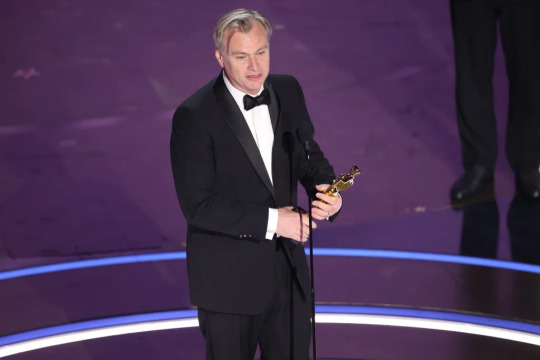
Christopher Nolan wins Best Director for Oppenheimer

Da’Vine Joy Randolph wins Best Supporting Actress for “The Holdovers”

Robert Downey Jr. accepts the Best Actor in a Supporting Role for “Oppenheimer”

(L-R) Brad Booker, Dave Mullins and Sean Lennon accept the Best Animated Short Film award for “War Is Over! Inspired by the Music of John and Yoko”

Arthur Harari and Justine Triet win Best Adapted Screenplay for “Anatomy of a Fall”

Cord Jefferson accepts the Best Adapted Screenplay award for “American Fiction”

Nadia Stacey accept the Best Makeup and Hairstyling award for “Poor Things” from Catherine O’Hara

James Price and Shona Heath win Best Production Design for “Poor Things”

Holly Waddington wins Best Costume Design for “Poor Things”

Jonathan Glazer accepts the Best International Feature Film award for “The Zone of Interest”

Masaki Takahashi, Takashi Yamazaki, Kiyoko Shibuya and Tatsuji Nojima win Best Visual Effects for “Godzilla Minus One”

Jennifer Lame wins Best Film Editing for ‘Oppenheimer’
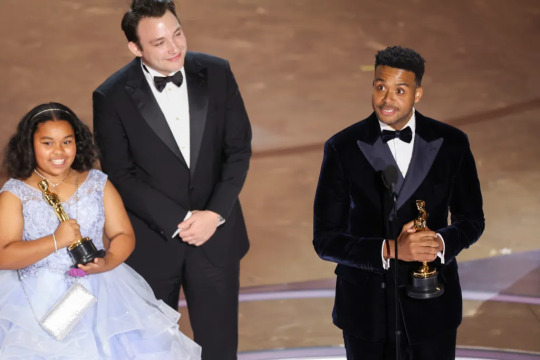
Dana Atkinson, Ben Proudfoot and Kris Bowers wins Best Documentary (Short Subject) for “The Last Repair Shop”

Tarn Willers and Johnnie Burn win Best Sound for “The Zone of Interest”
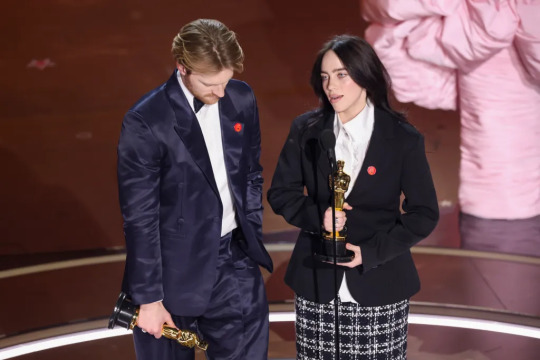
Finneas and Billie Eilish win Best Original Song for “What Was I Made For” from “Barbie”

Evgeniy Maloletka, Mstyslav Chernov and Michelle Mizner wins Best Documentary Feature for 20 Days in Mariupol
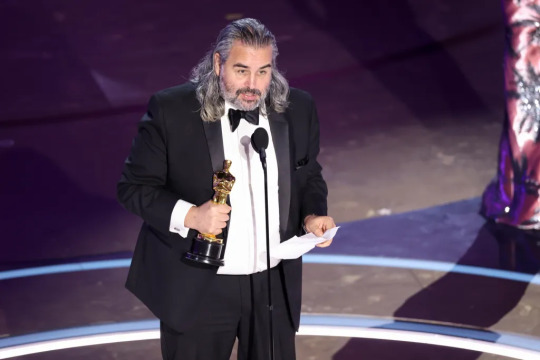
Hoyte van Hoytemawins Best Cinematography for “Oppenheimer”

Ludwig Göransson wins Best Original Score for “Oppenheimer”
26 notes
·
View notes
Text
Best Film Editing 2023
Winner
All Dirt Roads Taste of Salt - Lee Chatametikool
Nominees
The Killer - Kirk Baxter
Reality - Ron Dulin and Jennifer Vecchiarello
Theater Camp - Jon Philpot
Tótem - Omar Guzmán
The Zone of Interest - Paul Watts

Best Original Score 2023
Winner
The Zone of Interest - Mica Levi
Nominees
The Killer - Trent Reznor and Atticus Ross
Killers of the Flower Moon - Robbie Robertson
Other People's Children - Robin Coudert & Gael Rakotondrabe
Pacifiction - Joe Robinson and Marc Verdaguer
Trenque Lauquen - Gabriel Chwojnik

Best Sound Editing 2023
Winner
The Zone of Interest - Johnnie Burn
Nominees
Enys Men - Mark Jenkin and Barney Oram
Evil Dead Rise - Peter Albrechtsen
The Killer - Ren Klyce
No One Will Save You - Will Files and Chris Terhune

Best Sound Mixing 2023
Winner
The Zone of Interest - Johnnie Burn and Tarn Willers
Nominees
All Dirt Roads Taste of Salt - Nicolas de Poulpiquet
Infinity Pool - Rob Bertola and Alex Bullick
The Killer - Ren Klyce and Stephen Urata
Leave the World Behind - Jason King, Beau Borders, John W. Cook
Pacifiction - Jordi Ribas and Bruno Tarrière

Best Visual Effects 2023
Winner
Evil Dead Rise
Nominees
Beau is Afraid
No One Will Save You
7 notes
·
View notes
Text
4 notes
·
View notes
Text
SOUND MIXING
Shortlisted: Enys Men / Infinity Pool
THE NOMINEES ARE:

ALL OF US STRANGERS
Sound Mixing by Stevie Haywood
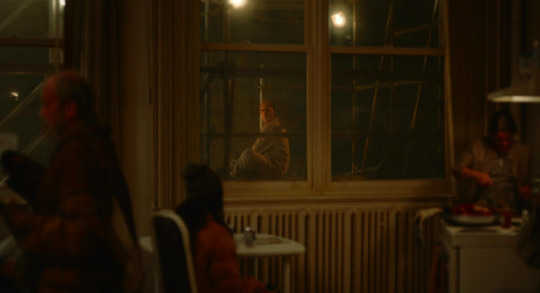
BEAU IS AFRAID
Re-recording Mixing by Paul Hsu, Production Sound Mixing by Claude La Haye
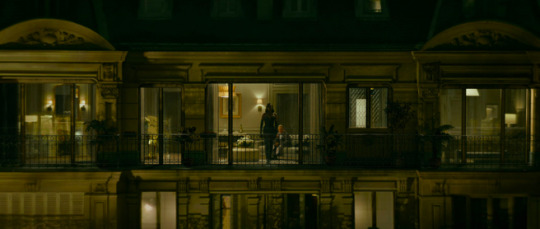
THE KILLER
Sound Design, Supervision and Re-recording Mixing by Ren Klyce, Production Sound Mixing by Drew Kunin, Sound Supervision by Steve Morris, Re-recording mixing by Stephen Urata

THE ZONE OF INTEREST
Re-recording Mixing and Sound Design by Johnnie Burn, Production Sound Mixing by Tarn Willers
AND THE CRISTAL GOES TO...
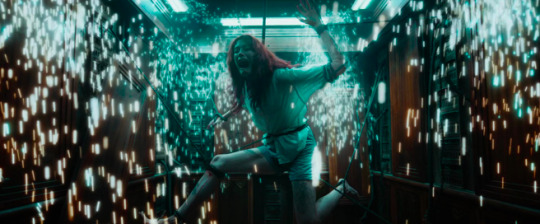
EVIL DEAD RISE
Sound Design by Peter Albrechtson, Sound Mixing by Myk Farmer, Re-recording Mixing by Garret Farrell
#2023 Film Awards#Best Sound Mixing#Evil Dead Rise#All of Us Strangers#Beau is Afraid#The Killer#The Zone of Interest
6 notes
·
View notes
Text
'...Close Your Eyes led the nominations alongside Andrew Haigh’s All of Us Strangers with 10 apiece. Strangers ended up the biggest winner of the day with four: Lead Actor Andrew Scott as a gay man finally coming to terms with his painful repression; Supporting Actor Jamie Bell as the ghostly, apologetic dad who failed to save him from bullying; the film’s entire otherworldly Ensemble, including strong turns from Claire Foy and Paul Mescal; and writer-director Andrew Haigh for his lovingly crafted Adapted Screenplay based on a novel by Taichi Yamada...
BEST PICTURE
1. Close Your Eyes
2. All of Us Strangers...
BEST DIRECTOR
• Lila Avilés – Tótem
• Victor Erice – Close Your Eyes – WINNER
• Jonathan Glazer – The Zone of Interest
• Andrew Haigh – All of Us Strangers
• Radu Jude – Do Not Expect Too Much from the End of the World – Runner-up
• Justine Triet – Anatomy of a Fall – Runner-up
LEAD ACTOR
• Paul Giamatti – The Holdovers
• Karim Leklou – Sons of Ramses
• Josh O’Connor – La Chimera
• Andrew Scott – All of Us Strangers – WINNER
• Manolo Solo – Close Your Eyes – Runner-up
• Koji Yakusho – Perfect Days
SUPPORTING ACTOR
• Jamie Bell – All of Us Strangers – WINNER
• José Coronado – Close Your Eyes – Runner-up
• Mateo Garcia – Tótem
• Milo Machado Graner – Anatomy of a Fall
• Charles Melton – May December
• Ben Whishaw – Passages
SUPPORTING ACTRESS
• Claire Foy – All of Us Strangers
• Julianne Moore – May December
• Da’Vine Joy Randolph – The Holdovers
• Catalina Saavedra – Rotting in the Sun
• Ana Torrent – Close Your Eyes – Runner-up
• Ana Torrent – Foremost by Night – WINNER
ENSEMBLE
• All of Us Strangers – WINNER
• Anatomy of a Fall
• Asteroid City
• Close Your Eyes
• Society of the Snow
• Tótem – Runner-up
ADAPTED SCREENPLAY
• All of Us Strangers – Andrew Haigh – WINNER
• The Beast in the Jungle – Patric Chiha, Jihane Chouaib, Axelle Ropert
• Killers of the Flower Moon – Eric Roth, Martin Scorsese
• Poor Things – Tony McNamara
• Society of the Snow – J.A. Bayona, Jaime Marques, Bernat Vilaplana, Nicolás Casariego
• The Zone of Interest – Jonathan Glazer – Runner-up
CINEMATOGRAPHY
• All of Us Strangers – Jamie Ramsay
• Close Your Eyes – Valentín Álvarez
• Inside the Yellow Cocoon Shell – Dinh Duy Hung – runner-up
• La Chimera – Hélène Louvart
• Samsara – Mauro Herce, Jessica Sarah Rinland – WINNER
• The Zone of Interest – Lukasz Zal
EDITING
• All of Us Strangers – Jonathan Alberts
• Anatomy of a Fall – Laurent Sénéchal – WINNER
• Close Your Eyes – Ascen Marchena
• Do Not Expect Too Much from the End of the World – Catalin Cristutiu – Runner-up
• Oppenheimer – Jennifer Lame
• Society of the Snow – Andrés Gil, Jaume Martí
SOUND DESIGN
• All of Us Strangers – Joakim Sundström
• The Boy and the Heron – Koji Kasamatsu
• Maestro – Richard King, Steve Morrow, Tom Ozanich, Jason Ruder, Dean Zupancic
• Oppenheimer – Richard King, Kevin O’Connell, Gary A. Rizzo, Willie Burton
• Samsara – Xabier Erkizia, Luca Rulio – WINNER
• The Zone of Interest – Johnnie Burn, Tarn Willers – Runner-up...'
#International Cinephile Society#Andrew Haigh#Andrew Scott#All of Us Strangers#Jamie Bell#Claire Foy#Joakim Sundstrom#Jonathan Alberts#Jamie Ramsay#Strangers#Taichi Yamada
2 notes
·
View notes
Text
0 notes
Text
Oscars 2024 : photos et palmarès

Palmarès :
Meilleur film : Oppenheimer de Christopher Nolan
Meilleur réalisateur : Christopher Nolan pour Oppenheimer
Meilleur acteur : Cillian Murphy pour Oppenheimer
Meilleure actrice : Emma Stone pour Pauvres Créatures
Meilleur acteur dans un second rôle : Robert Downey Jr. pour Oppenheimer
Meilleure actrice dans un second rôle : Da’Vine Joy Randolph pour Winter Break
Meilleur scénario original : Anatomie d’une chute de Justine Triet et Arthur Harari
Meilleur scénario adapté : American Fiction de Cord Jefferson, adapté du roman Effacement (Erasure) de Percival Everett
Meilleurs décors et direction artistique : James Price, Shona Heath et Zsuzsa Mihalek pour Pauvres Créatures
Meilleurs costumes : Holly Waddington pour Pauvres Créatures
Meilleurs maquillages et coiffures : Nadia Stacey, Mark Coulier et Josh Weston pour Pauvres Créatures
Meilleure photographie : Hoyte van Hoytema pour Oppenheimer
Meilleur montage : Jennifer Lame pour Oppenheimer
Meilleur son : Johnnie Burn et Tarn Willers pour la Zone d’intérêt (The Zone of Interest) de Jonathan Glazer
Meilleurs effets visuels : Takashi Yamazaki, Kiyoko Shibuya, Masaki Takahashi et Tatsuji Nojima pour Godzilla Minus One
Meilleure chanson originale : What Was I Made For ? de Billie Eilish et Finneas O’Connell pour le film Barbie
Meilleure musique de film : Ludwig Göransson pour Oppenheimer
Meilleur film international : la Zone d’intérêt (The Zone of Interest) de Jonathan Glazer (Royaume-Uni)
Meilleur film d’animation : le Garçon et le Héron (The Boy and the Heron) d’Hayao Miyazaki
Meilleur film documentaire : 20 Days in Mariupol de Mstyslav Tchernov
Meilleur court métrage (prises de vues réelles) : la Merveilleuse Histoire de Henry Sugar («The Wonderful Story of Henry Sugar») de Wes Anderson
Meilleur court métrage (documentaire) : The Last Repair Shop de Ben Proudfoot et Kris Bowers
Meilleur court métrage (animation) : War Is Over ! Inspired by the Music of John and Yoko de Dave Mullins et Brad Booker
Photos :

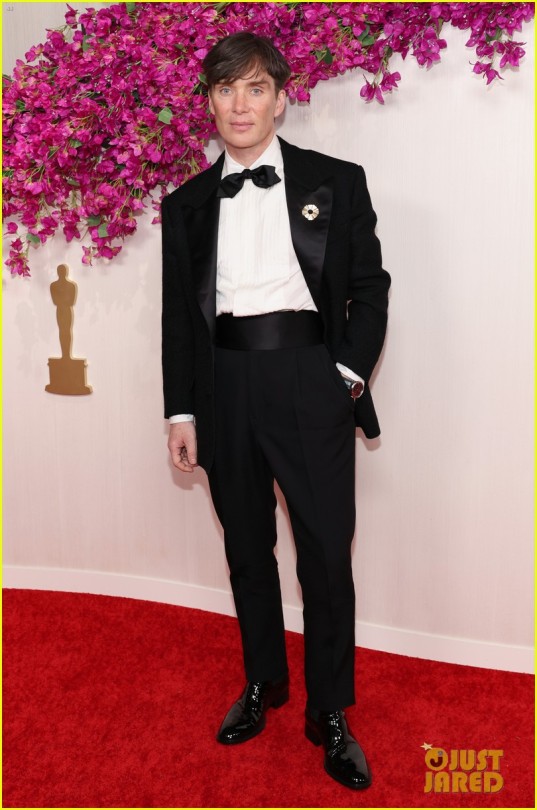







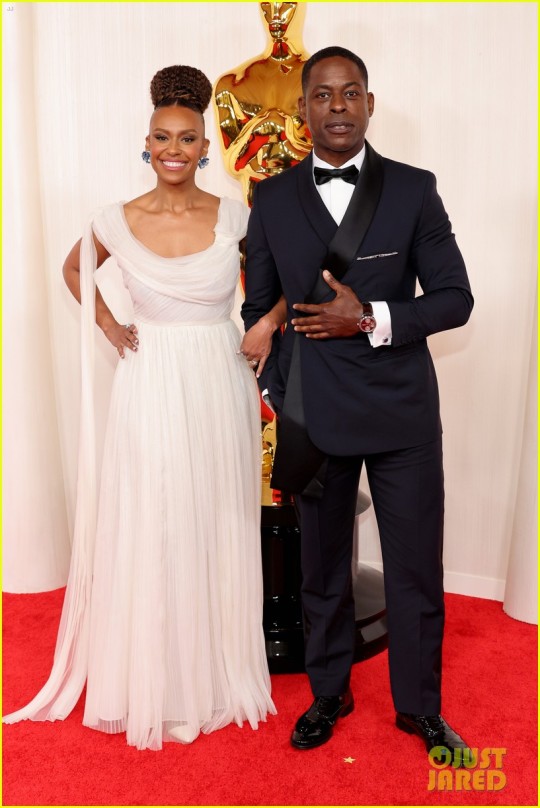
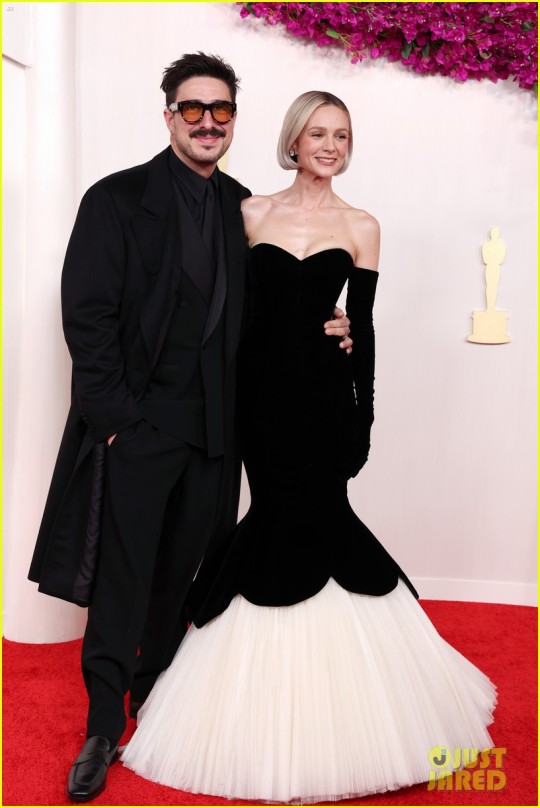

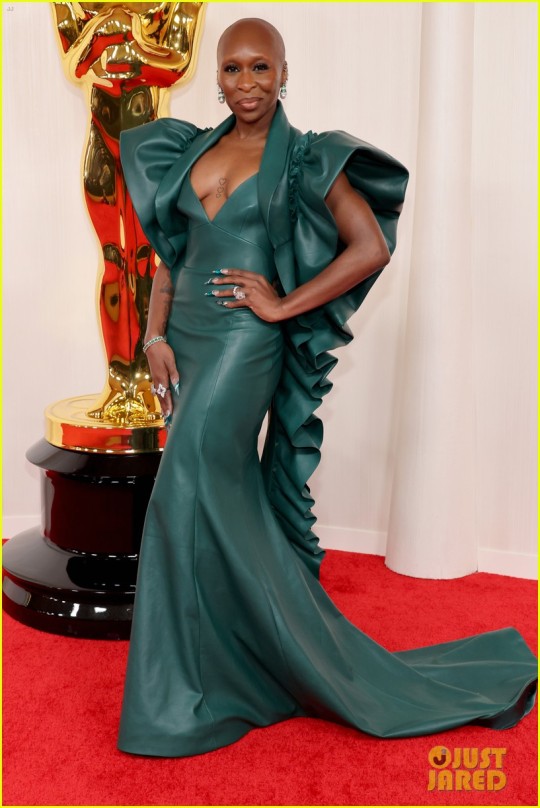
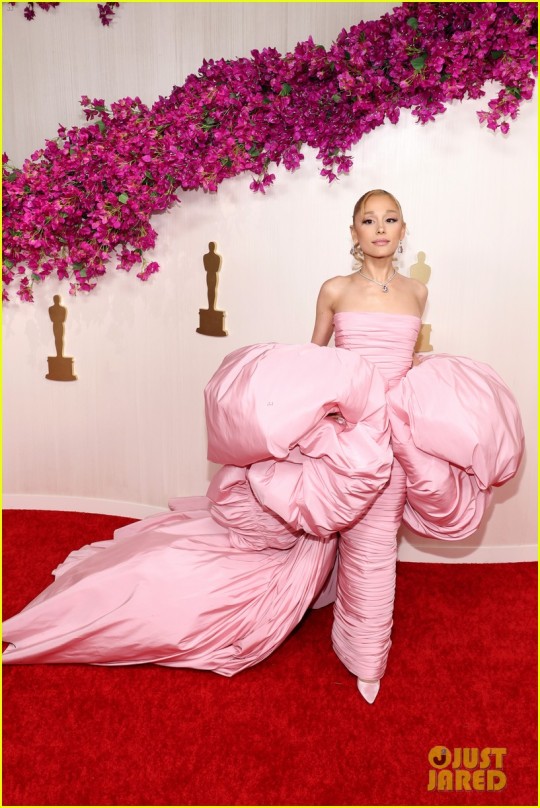
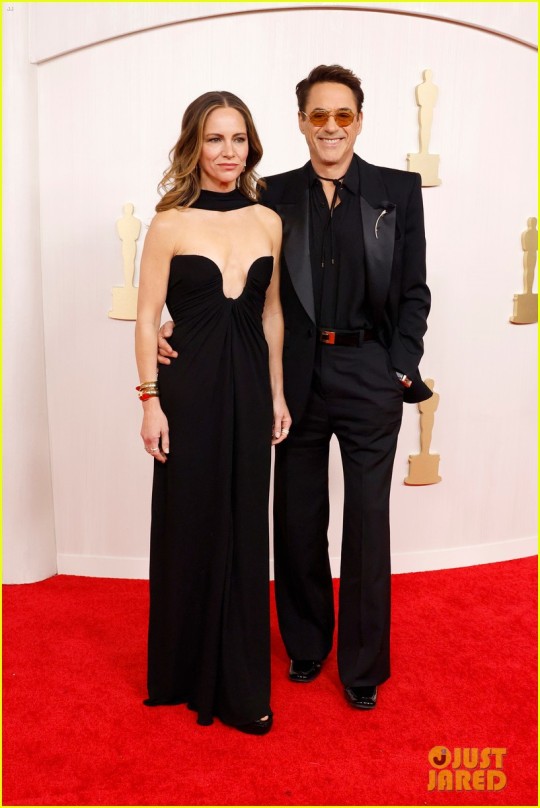



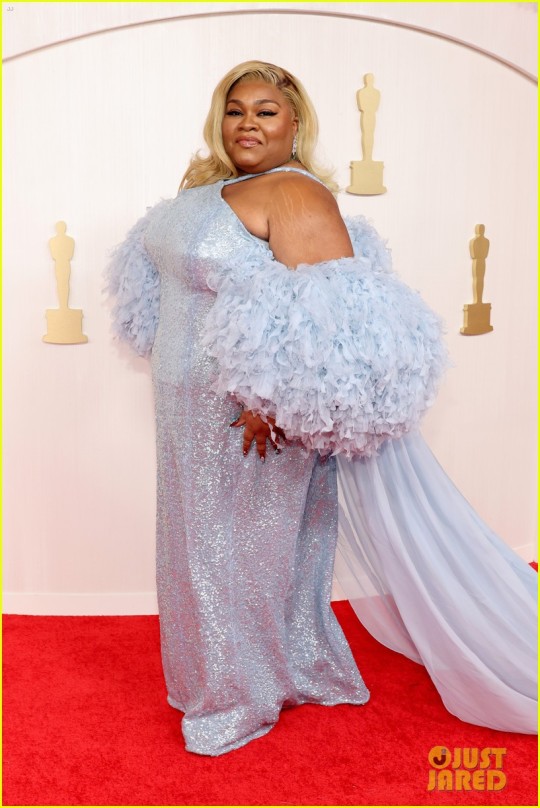






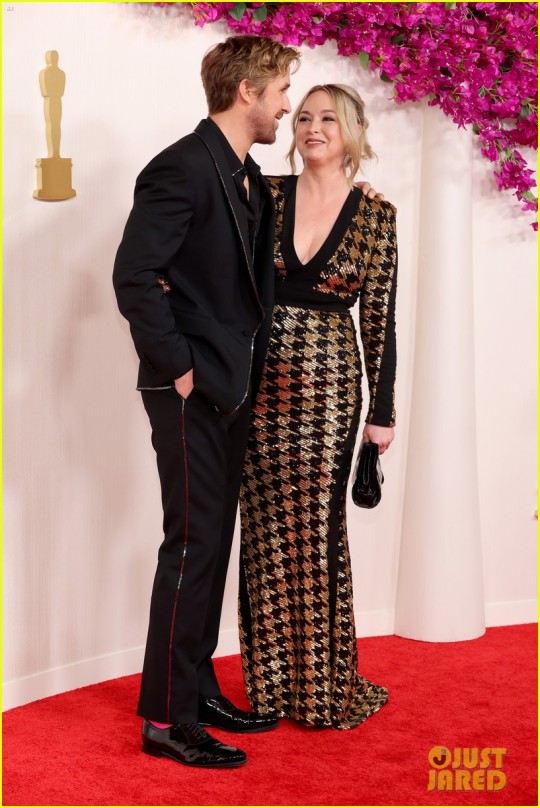
Photos : Just Jared ©
0 notes
Text


MARDI 12 MARS 2024 (Billet 2 / 4)
Au niveau des répercussions mondiales dans le cinéma, les Oscars sont aux Césars ce qu’un dîner en tête à tête conçu par Yannick Allléno au premier étage du Pavillon Le Doyen est à un pic-nic « saucisson/œufs durs/carotte râpées » sur l’aire de repos de Goyencourt-Est de l’autoroute A1 par temps de pluie ! (*)
Pour preuve, alors que Christopher Nolan était l’invité d’honneur de notre dernière Cérémonie des Césars et que son film « Oppenheimer » était nommé dans la catégorie du « Meilleur Film Etranger », c’est le film canadien « Simple comme Sylvain », infiniment moins bon que « Testament » de Denys Arcand, sorti un peu avant, ne parlons même pas de celui qui était le grand favori, qui a raflé la statuette ! 😒
La Cérémonie américaine, elle, s’est déroulée dans la nuit du dimanche au lundi. Lire ci-dessous.
___________________________
PALMARES DES OSCARS 2024 : « Oppenheimer », « Anatomie d’une chute » et tous les gagnants…
Les votants de l’Académie des Oscars ont plébiscité le film de Christopher Nolan, et salué les « Pauvres créatures » de Yorgos Lanthimos. Le film français « Anatomie d’une chute » repart avec l’oscar du meilleur scénario original.
Comme prévu, « Oppenheimer » de Christopher Nolan a été le grand gagnant de cette 96e Cérémonie des oscars, avec pas moins de 7 statuettes pour 13 nominations, laissant derrière « Pauvres Créatures » de Yorgos Lanthimos, avec 4 récompenses pour 11 nominations. La France repart avec une statuette, celle du meilleur scénario original pour « Anatomie d’une chute ».
A l’inverse, « Killers of the flower moon » de Martin Scorsese et « Maestro » de Bradley Cooper repartent les mains vides malgré respectivement 10 et 7 nominations. Grosse déception pour « Barbie » (8 nominations) qui remporte seulement une statuette, celle de la meilleure chanson originale.
Meilleur film : « Oppenheimer » de Christopher Nolan
Meilleur réalisateur : Christopher Nolan pour « Oppenheimer »
Meilleur acteur : Cillian Murphy pour « Oppenheimer »
Meilleure actrice : Emma Stone pour « Pauvres Créatures »
Meilleur acteur dans un second rôle : Robert Downey Jr. pour « Oppenheimer »
Meilleure actrice dans un second rôle : Da’Vine Joy Randolph pour « Winter Break »
Meilleur scénario original : « Anatomie d’une chute » de Justine Triet et Arthur Harari
Meilleur scénario adapté : « American Fiction » de Cord Jefferson, adapté du roman Effacement (Erasure) de Percival Everett
Meilleurs décors et direction artistique : James Price, Shona Heath et Zsuzsa Mihalek pour « Pauvres Créatures »
Meilleurs costumes : Holly Waddington pour « Pauvres Créatures »
Meilleurs maquillages et coiffures : Nadia Stacey, Mark Coulier et Josh Weston pour « Pauvres Créatures »
Meilleure photographie : Hoyte van Hoytema pour « Oppenheimer »
Meilleur montage : Jennifer Lame pour « Oppenheimer »
Meilleur son : Johnnie Burn et Tarn Willers pour « La Zone d’intérêt » (The Zone of Interest) de Jonathan Glazer
Meilleurs effets visuels : Takashi Yamazaki, Kiyoko Shibuya, Masaki Takahashi et Tatsuji Nojima pour « Godzilla Minus One »
Meilleure chanson originale : What Was I Made For ? de Billie Eilish et Finneas O’Connell pour le film « Barbie »
Meilleure musique de film : Ludwig Göransson pour « Oppenheimer »
Meilleur film international : « La Zone d’intérêt » (The Zone of Interest) de Jonathan Glazer (Royaume-Uni)
Meilleur film d’animation : « Le Garçon et le Héron » (The Boy and the Heron) d’Hayao Miyazaki
Meilleur film documentaire : « 20 Days in Mariupol » de Mstyslav Tchernov
(Source : « liberation.fr »)
_________________________________
Nous sommes très heureux pour Da’Vine, l’actrice de « Winter Break ». Un très joli petit film que nous avions bien apprécié. Les acteurs principaux étaient tous les 3 excellents. Très heureux aussi pour le couple Justine Triet et Arthur Harari, auteurs du scénario d’« Anatomie d’une chute » et tout à fait satisfaits des 7 Oscars remportés par « Oppenheimer ». Par contre, moins emballés par « La zone d’intérêt » qui nous a laissés un peu perplexes…
(*) La comparaison est peut-être un peu exagérée mais nous l'avons laissée pour vous montrer notre mauvaise foi... et (surtout) vous faire sourire.
0 notes
Text
Oscar per il miglior sonoro a La zona di interesse
L’Oscar per il miglior sonoro è
andato a La zona di interesse dell’inglese Jonathan Glazer. La
statuetta è stata vinta da Tarn Willers e Johnnie Burn.
Riproduzione riservata © Copyright ANSA
source
View On WordPress
0 notes
Text
Oscars 2024 Predictions
Best Picture: Oppenheimer ✔
Actor in a Leading Role: Cillian Murphy, Oppenheimer ✔
Actor in a Supporting Role: Robert Downey, Jr., Oppenheimer ✔
Actress in a Leading Role: Lily Gladstone, Killers of the Flower Moon X
Actress in a Supporting Role: Da’Vine Joy Randolph, The Holdovers ✔
Animated Feature Film: Spider-Man: Across the Spider-Verse X
Cinematography: Hoyte van Hoytema, Oppenheimer ✔
Costume Design: Jacqueline Durran, Barbie X
Directing: Christopher Nolan, Oppenheimer ✔
Film Editing: Jennifer Lame, Oppenheimer ✔
International Feature Film: United Kingdom, The Zone of Interest ✔
Makeup and Hairstyling: Nadia Stacey, Mark Coulier, Josh Weston, Poor Things ✔
Music (Original Score): Ludwig Goransson, Oppenheimer ✔
Music (Original Song): Billie Eilish, Finneas O’Connell, “What Was I Made For?”, Barbie ✔
Production Design: James Price, Shona Heath, Zsuzsa Mihalek, Poor Things ✔
Sound: Tarn Willers, Johnnie Burn, The Zone of Interest ✔
Visual Effects: Takashi Yamazaki, Kiyoko Shibuya, Masaki Takahashi, Tatsuji Nojima, Godzilla Minus One ✔
Writing (Adapted Screenplay): Christopher Nolan, Oppenheimer X
Writing (Original Screenplay): Celine Song, Past Lives X
14/19
0 notes
Text
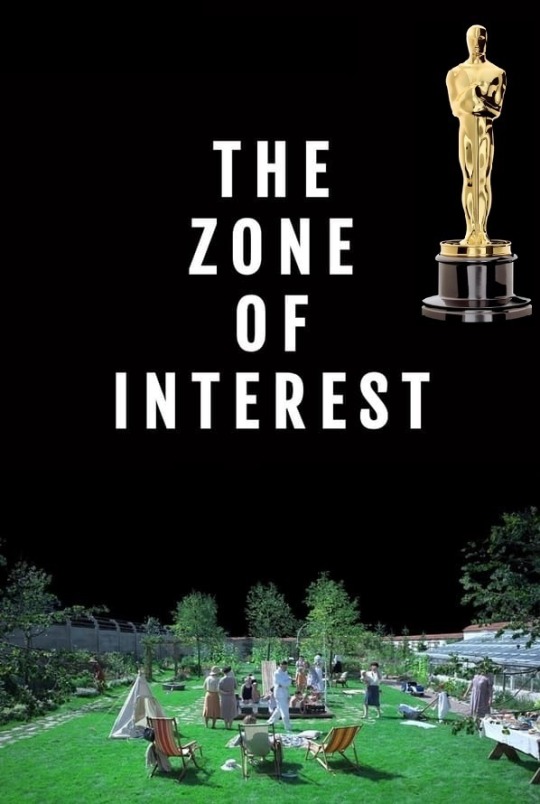
Best Sound - The Zone of Interest (Tarn Willers and Johnnie Burn)
0 notes
Text
LIAFF SPECIAL #12: Oscars 2024: Le previsioni (3)

MIGLIORI EFFETTI SPECIALI
Jay Cooper, Ian Comley, Andrew Roberts e Neil Corbould - The Creator
Takashi Yamazaki, Kiyoko Shibuya, Masaki Takahashi e Tatsuji Nojima - Godzilla: Minus One
Stephane Ceretti, Alexis Wajsbrot, Guy Williams e Theo Bialek - Guardiani della Galassia Vol. 3
Alex Wuttke, Simone Coco, Jeff Sutherland e Neil Corbould - Mission: Impossible - Dead Reckoning - Parte uno
Charley Henley, Luc Ewen, Martin Fenouillet, Simone Coco e Neil Corbould - Napoleon
MIGLIOR MONTAGGIO
Laurent Sénéchal - Anatomia di una caduta
Kevin Tent - The Holdovers - Lezioni di vita
Thelma Schoonmaker - Killers of the Flower Moon
Jennifer Lame - Oppenheimer
Yorgos Mavropsaridis - Povere creature!
MIGLIOR SONORO
Ian Voigt, Erik Aadahl, Ethan Van Der Ryn, Tom Ozanich e Dean Zupancic - The Creator
Steven A. Morrow, Richard King, Jason Ruder, Tom Ozanich e Dean Zupancic - Maestro
Chris Munro, James H. Mather, Chris Burdon e Mark Taylor - Mission: Impossible - Dead Reckoning - Parte uno
Willie Burton, Richard King, Gary A. Rizzo e Kevin O'Connell - Oppenheimer
Tarn Willers e Johnnie Burn - La zona d'interesse
MIGLIOR COLONNA SONORA ORIGINALE
Laura Karpman - American Fiction
John Williams - Indiana Jones e il quadrante del destino
Robbie Robertson - Killers of the Flower Moon
Ludwig Göransson - Oppenheimer
Jerskin Fendrix - Povere creature!
MIGLIOR CANZONE ORIGINALE
The Fire Inside - Flamin' Hot
I'm Just Ken - Barbie
It never went away - American Symphony
Wahzhazhe (A song for my people) - Killers of the Flower Moon
What Was I Made For? - Barbie
Voi siete d'accordo con le nostre previsioni? Fatecelo sapere nei commenti. E non dimenticatevi che la cerimonia andrà in onda nella notte fra 10 ed 11 Marzo su Rai 1.
#the creator#godzilla: minus one#mission impossible: dead reckoning#guardians of the galaxy vol. 3#napoleon#oppenheimer#poor things#barbie#the holdovers#killers of the flower moon#american fiction#oscar 2024#cinema#previsioni#LIAFF: LIAFF SPECIAL#parte 3
1 note
·
View note
Text
Bafta 2024: la notte atomica di "Oppenheimer", si porta a casa 7 premi

Bafta 2024: la notte atomica di "Oppenheimer", si porta a casa 7 premi.
Oppenheimer, l'ultimo film di Christopher Nolan biopic sul padre della bomba atomica, ha trionfato a Londra ai Bafta 2024, i massimi premi del cinema anglosassone e indicazione cruciale verso gli Oscar. Il gioiello di Nolan ha vinto sette statuette a cominciare dal miglior film, e poi nelle categorie miglior regista, miglior attore (Cillian Murphy) e miglior attore non protagonista (Robert Downey Jr.). Migliore attrice Emma Stone per "Povere Creature!" di Yorgos Lanthimos, Leone d'oro a Venezia. Grande successo anche per "The Zone of Interest" di Jonathan Glazer ha vinto tra l'altro come miglior film inglese e miglior film in lingua non inglese, mentre "20 giorni a Maryupol" è il miglior documentario e "Il ragazzo e l'airone" di Hayao Miyazaki per l'animazione.
Tutti i premi:
Miglior film – Oppenheimer di Christopher Nolan
Miglior film britannico – La zona d’interesse di Jonathan Glazer
Miglior esordio britannico – Savanah Leaf, Shirley O’Connor e Medb Riordan per Earth Mama
Miglior film in lingua non inglese – La zona d’interesse di Jonathan Glazer
Miglior documentario – 20 Days in Mariupol di Mstyslav Chernov
Miglior film d’animazione – Il ragazzo e l’airone di Hayao Miyazaki
Miglior regia – Christopher Nolan per Oppenheimer
Miglior sceneggiatura originale – Justine Triet e Arthur Harari per Anatomia di una caduta
Miglior sceneggiatura non originale – Cord Jefferson per American Fiction
Miglior attrice protagonista – Emma Stone per Povere Creature!
Miglior attore protagonista – Cillian Murphy per Oppenheimer
Miglior attrice non protagonista – Da’Vine Joy Randolph per The Holdovers – Lezioni di vita
Miglior attore non protagonista – Robert Downey Jr. per Oppenheimer
Miglior casting – Susan Shopmaker per The Holdovers – Lezioni di vita
Miglior fotografia – Hoyte van Hoytema per Oppenheimer
Migliori costumi – Holly Waddington per Povere Creature!
Miglior scenografia – Shona Heath, James Price e Zsuzsa Mihalek per Povere Creature!
Miglior montaggio – Jennifer Lame per Oppenheimer
Miglior trucco e acconciatura – Nadia Stacey, Mark Coulier e Josh Weston per Povere Creature!
Miglior colonna sonora – Ludwig Göransson per Oppenheimer
Miglior sonoro – Johnnie Burn e Tarn Willers per La zona d’interesse
Migliori effetti speciali e visivi – Simon Hughes per Povere Creature!
Miglior cortometraggio britannico d’animazione – Crab Day di Ross Stringer, Bartosz Stanislawek e Aleksandra Sykulak
Miglior cortometraggio britannico live action – Jellyfih and Lobster di Yasmin Afifi e Elizabeth Rufai
EE Rising Star (miglior esordiente) – Mia McKenna-Bruce...
#notizie #news #breakingnews #cronaca #politica #eventi #sport #moda
Read the full article
0 notes